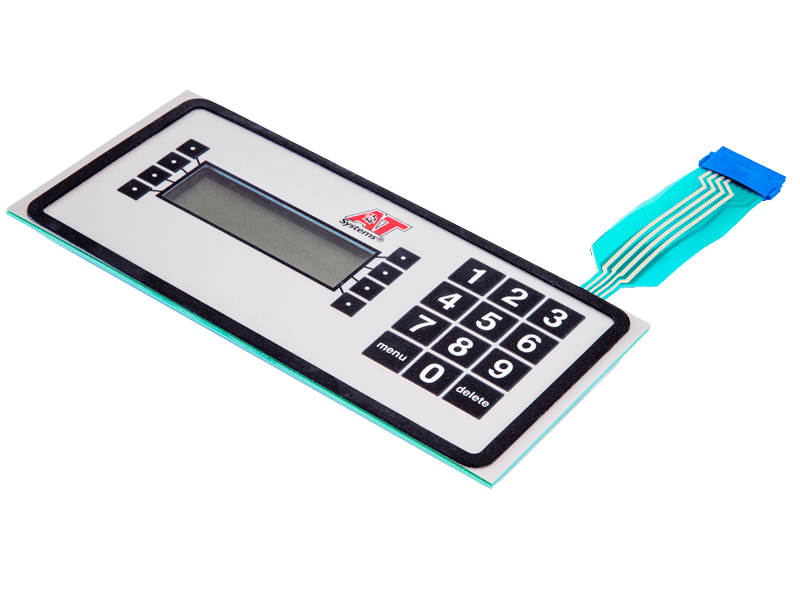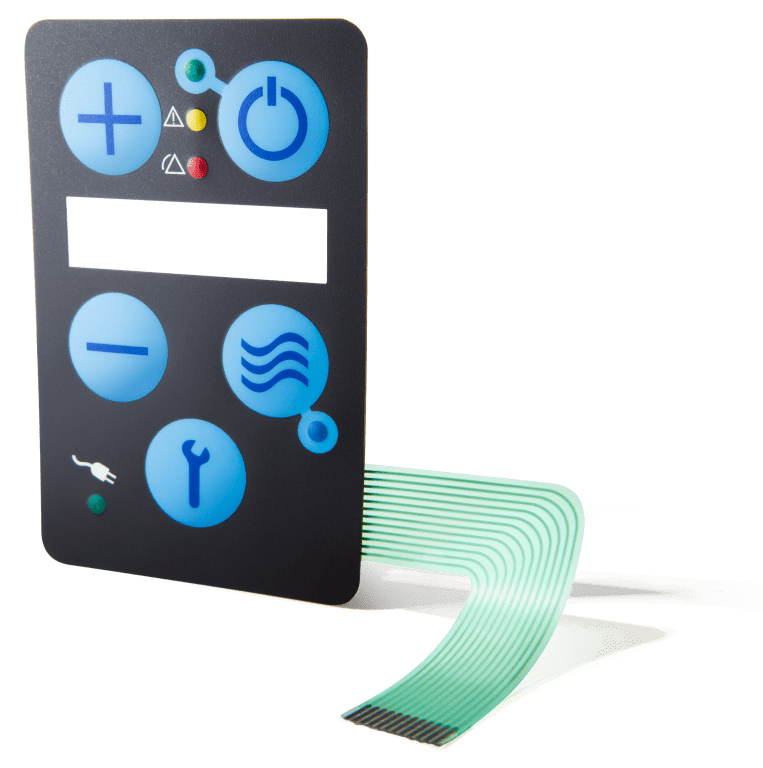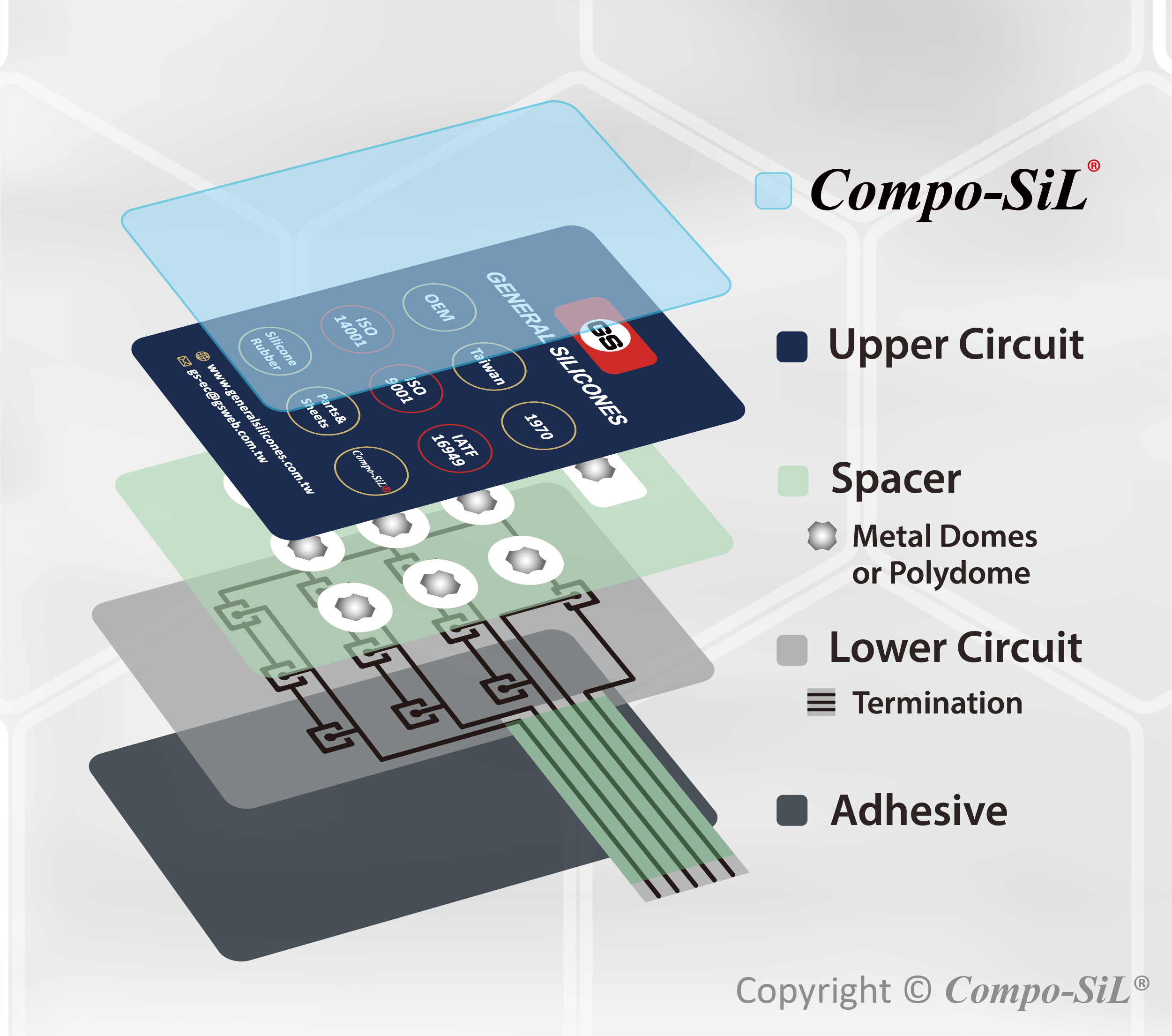Comprehending the Significance of Membrane Switches in Interface
Membrane switches are essential elements in the design of reliable interface, assisting in not only performance yet also improving visual allure and customer interaction. Their special functions, such as resistance to environmental factors and personalized layouts, make them ideal for a diverse selection of applications across multiple industries. As we check out the various benefits and future patterns linked with Membrane technology, it comes to be clear that these switches are more than just components; they stand for a merging of technology and functionality. The ramifications of this technology on customer experience deserve analyzing further.
What Are Membrane Switches?

The spacer layer, which consists of glue residential properties, allows for the separation of the circuit layer from the overlay, guaranteeing that the button continues to be in a non-activated state until pressed. When stress is related to the overlay, it presses the spacer layer, linking the gap and completing the circuit in the underlying layer. This style not just lowers the physical area required for conventional mechanical switches however likewise enhances the resilience of the gadget, as Membrane switches are normally resistant to dirt, wetness, and other environmental aspects.
Typically found in applications ranging from customer electronics to medical devices, Membrane buttons are integral to modern technology, giving a reliable and user-friendly user interface that straightens with modern design needs.
Benefits of Membrane Switches
While numerous switch modern technologies exist, Membrane Switches offer distinct benefits that make them particularly desirable in numerous applications. One of the main advantages of Membrane switches is their small layout, which enables space-saving executions in gadgets where genuine estate is restricted. Their slim profile not just enhances visual allure but likewise facilitates lightweight building.
Another considerable benefit is their resistance to ecological elements. Membrane buttons are commonly sealed versus moisture, dirt, and pollutants, making them perfect for usage sought after atmospheres, such as clinical gadgets and commercial devices. This sturdiness prolongs the life expectancy of the button, reducing maintenance prices and enhancing integrity.
In addition, Membrane switches can be tailored to satisfy details design demands, integrating one-of-a-kind graphics and shades that enhance customer communication. Their tactile responses options can likewise be customized to provide a satisfying customer experience. Furthermore, Membrane buttons are affordable, particularly in high-volume applications, as they can be produced successfully.
Applications in Numerous Industries

In the customer electronics sector, Membrane switches prevail in tools such as microwaves, washing equipments, and remote controls. Their tactile feedback and visual choices improve individual experience while giving a sleek, contemporary appearance. Furthermore, vehicle manufacturers utilize Membrane switches in control panel controls and infotainment systems, where area is limited, and customer involvement is crucial.
Additionally, the industrial industry leverages Membrane buttons in control panels for machinery and tools, permitting for instinctive procedure in often harsh atmospheres. Their resistance to chemicals and dampness guarantees longevity and reliability in these applications. Generally, the flexibility of Membrane Switches adds significantly to their widespread usage, making them indispensable in various technical domain names.
Style Factors To Consider for Membrane Switches

When creating Membrane switches, numerous vital considerations have to be taken into consideration to guarantee ideal capability and customer experience. The choice of materials is important; picking long lasting, top notch substratums can improve the button's longevity and resistance to environmental aspects such as wetness and temperature fluctuations.
Secondly, the design of the graphic overlay must focus on quality and convenience of usage. Icons and message must be legible, and the layout ought to facilitate user-friendly interaction (membrane switches). Additionally, tactile responses is crucial; integrating a responsive dome or various other devices can boost the customer experience by offering physical verification of activation
An additional important factor is the button's electrical efficiency. Designers should ensure that the conductive traces are effectively made to lessen resistance and stay clear of signal disturbance. This involves evaluating the required actuation pressure and ensuring compatibility with the electronic components they will user interface with.

Future Trends in Membrane Innovation
As modern technology continues to advancement, Membrane buttons are poised to advance dramatically, driven by innovations in materials and manufacturing techniques. One arising fad is the incorporation of advanced products, such as versatile substrates and conductive inks, which improve durability and lower the general weight of Membrane buttons. These products not only boost the tactile response yet additionally permit the design of switches that can endure harsher environmental conditions.
In addition, the assimilation official website of touch-sensitive technologies is transforming traditional Membrane Switches right into more interactive interface. Capacitive touch sensing units embedded within Membrane switch panels can provide a much more intuitive and receptive individual experience, aligning with the growing demand for sleek, modern-day styles in customer electronic devices.
Additionally, improvements in printing strategies, such as digital and 3D printing, enable quick prototyping and personalization of useful link Membrane switches. This adaptability permits makers to react quicker to market demands and consumer preferences.
Finally, sustainability is ending up being a substantial focus, with suppliers checking out environmentally friendly products and processes. As these patterns unravel, the future of Membrane modern technology assures improved functionality, aesthetic appeal, and environmental obligation, solidifying their duty in innovative interface across various markets.
Final Thought
In final thought, Membrane Switches represent a crucial part in the layout of user interfaces, incorporating capability with aesthetic adaptability. As innovations in technology continue, the development of Membrane switches is anticipated to additional improve customer interfaces, driving innovation and improving use in a progressively complicated technical landscape.
Membrane switches are Read More Here indispensable elements in the design of reliable user interfaces, helping with not only capability yet likewise improving visual appeal and individual interaction.Membrane Switches offer as an important element in various customer interfaces, assisting in a seamless communication between individuals and electronic gadgets.While various switch innovations exist, Membrane Switches offer unique advantages that make them particularly preferable in different applications.Moreover, Membrane buttons can be customized to satisfy particular style demands, incorporating one-of-a-kind graphics and colors that boost user communication.In final thought, Membrane Switches stand for an important element in the layout of user interfaces, incorporating capability with visual flexibility.